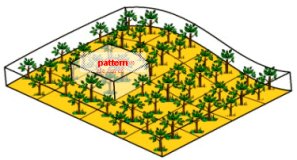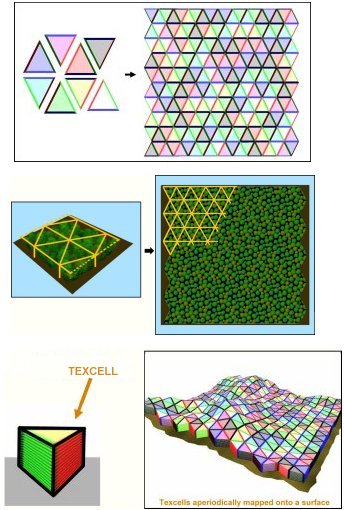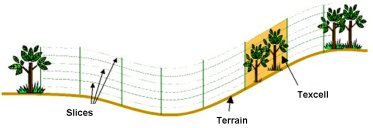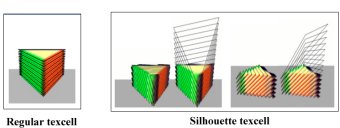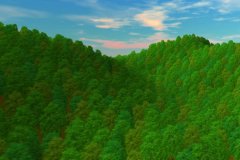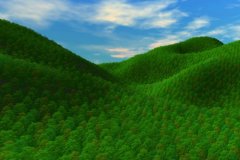Note: A more general and recent approach for rendering semi-transparent and visually complex objects like trees in real-time is presented here.
Rendering forest scenes in real-time (2004)
This page describes a representation allowing for the real-time rendering of realistic forests
covering an arbitrary terrain. It lets us produce dense forests corresponding to continuous
non-repetitive fields made of thousands of trees with full parallax.
The representation draws on volumetric textures and aperiodic tiling: the forest consists of a
set of edge-compatible prisms containing forest samples which are aperiodically mapped
onto the ground. The representation allows for quality rendering, thanks to appropriate
3D non-linear filtering. It relies on LODs and on a GPU-friendly structure to achieve real-time performance.
No advanced graphics hardware feature is required except 3D textures and decent fill and vertex transform rates.
However we can take advantage of vertex shaders so that the slicing of the volumetric texture is entirely done on the GPU.
More details in this Paper.
GPU-Based Lighting and Shadowing of Complex Natural Scenes (2004)
Lightings and shadows are essential elements toward realism of landscapes (e.g., terrain, vegetation,
or any complex shapes bounded in a layer above a surface) because they help understanding shapes. However:
- Using polygonal meshes and classical shadowing algorithms are too costly in terms of computation for complex scenes;
- Adapted algorithms for dedicated representations such height-fields are efficient, but these representations are too limited for our needs (e.g. forest);
- Although more powerful representations like surfels or texels exist, algorithms for quality and efficient lighting and shadowing are not available yet.
Thus, our goal is to propose lighting and shadowing techniques adapted to such representations as well as the GPU.
More details in this Presentation.
| 








 Index
Index Description
Description
